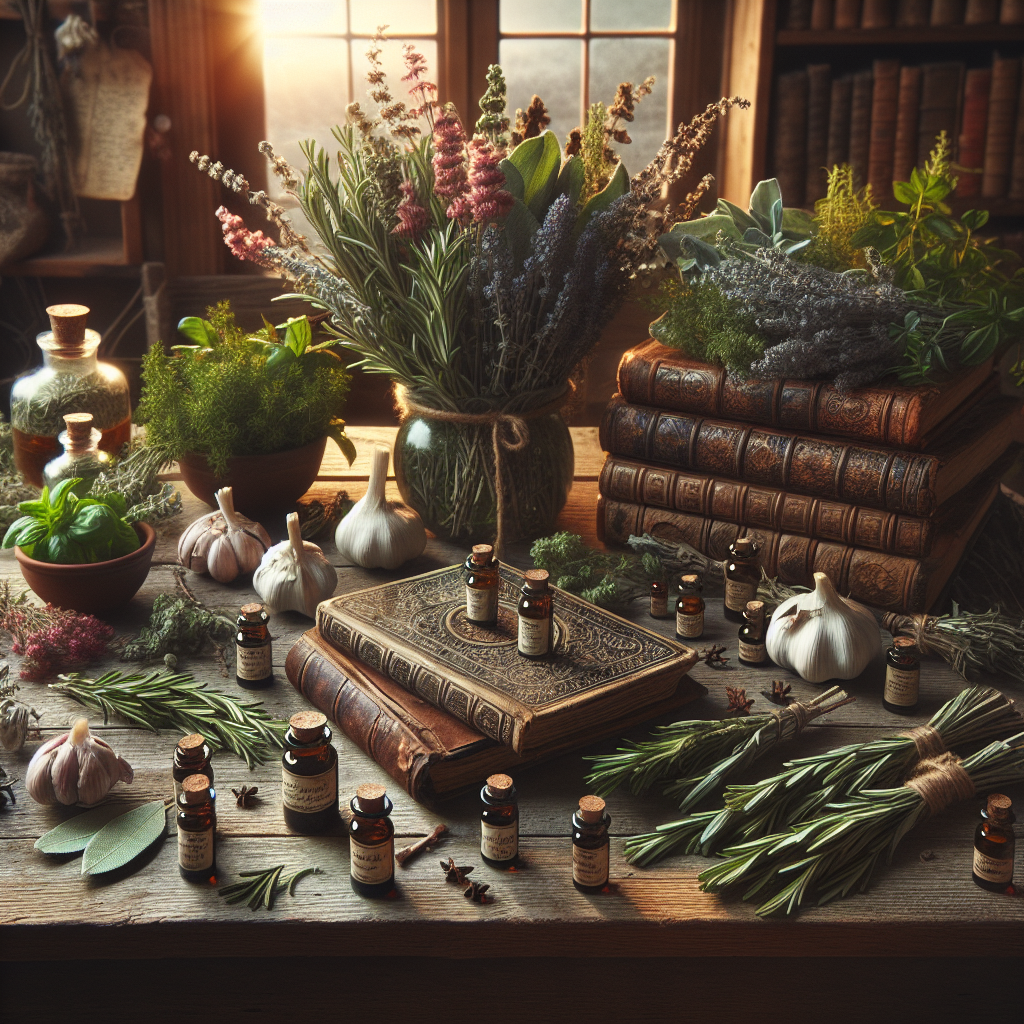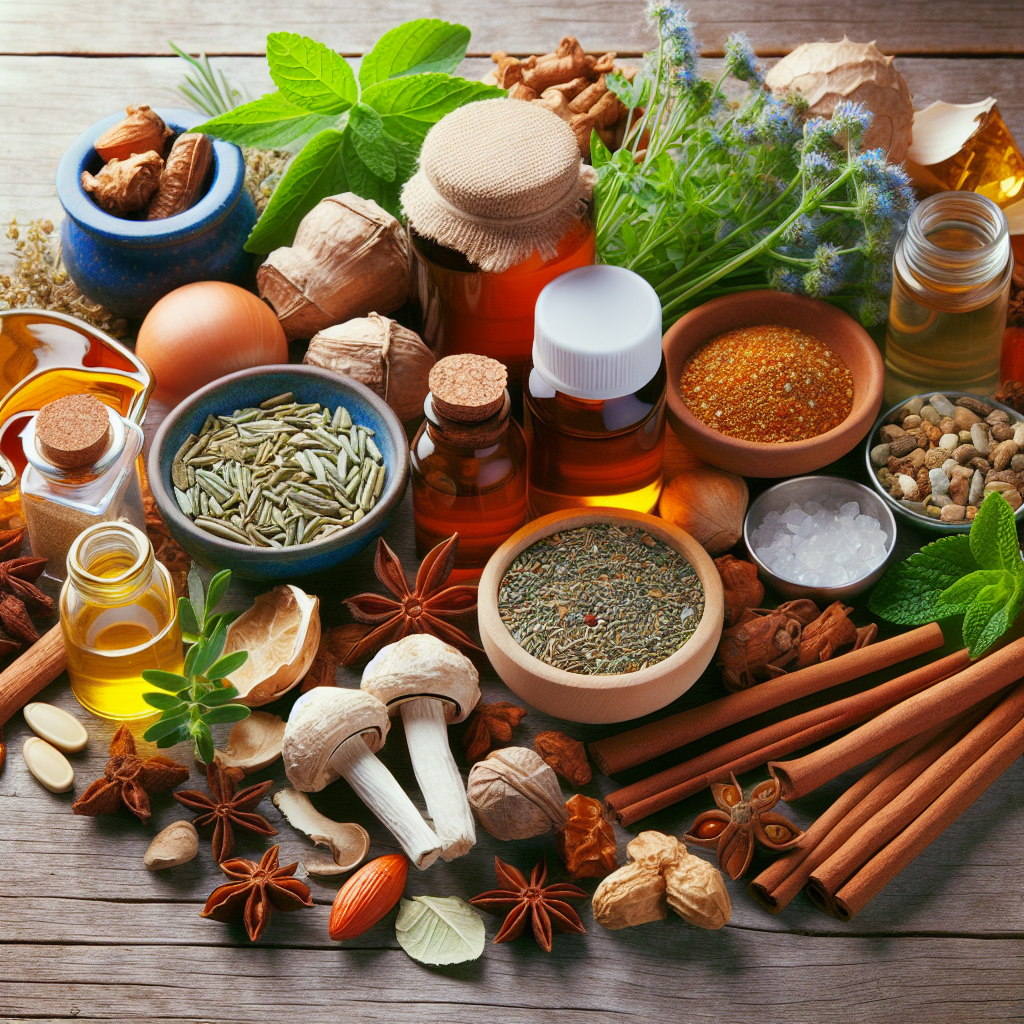As an Amazon Associate I earn from qualifying purchases.

Throughout history, herbs have been vested with an array of mystical properties, one of the most enduring being their ability to offer protection. From ancient herbalism to modern witchcraft, the belief in the protective powers of plants has been a consistent thread. Guarding against malevolent forces, whether spiritual or physical, herbs have been employed in various cultures as amulets, incense, and in rituals designed to safeguard individuals and spaces.
The use of protective herbs is deeply rooted in folklore and traditional medicine, with mentions dating back to ancient texts such as “The Book of Magical Herbs” by ancient herbalists. Practitioners from various traditions would hang herbs over doorways, incorporate them into charm bags, and use them in baths. Sage, for instance, has been used for centuries to ward off evil spirits and negative energies, while the European tradition considered St. John’s Wort as a powerful shield against supernatural entities.
In modern times, this practice has not only persisted but also adapted to contemporary needs, lending an ancient resonance to the present day. The incorporation of herbal protection is seen in the aromatherapy industry, which promotes essential oils like rosemary and lavender for their purported ability to cleanse the air of pathogens while also creating a peaceful environment. Studies investigating the antimicrobial properties of certain herbs lend scientific credence to some of these protective claims.
One particularly compelling statistic is how the global market for herbal supplements, including those used for protective purposes, continues to grow exponentially. In 2021 alone, the global herbal supplement market was valued at approximately $6.5 billion, illustrating the massive scale at which these ancient practices have been integrated into contemporary health and well-being industries.
From being woven into the fabric of ancient protective rites to finding their place in modern homes and holistic wellness regimes, herbs continue to be a potent symbol and tool for protection. Their aroma and essence persist, wrapping the old mystique in new forms, as their legacy continues to sprout in the soils of the present world.
“`html
Which Herbs Offer the Best Natural Protection?
“`
In the quest for natural ways to safeguard oneself, many turn to the potent powers of herbs known for their protective properties. Historically, cultures around the world have identified a range of plants that are believed to ward off negative energies, promote physical well-being, and create barriers against harmful forces. From the purifying smoke of burning sage to the guarding influence of lavender, each herb carries its unique form of defense. In the forthcoming sections, we will delve into the most revered protective herbs, explore their traditional uses, and uncover the modern interpretations of their guardianship, offering a comprehensive guide for those seeking to incorporate these natural allies into their protection rituals.
Herbs for protection have been used since ancient times across various cultures and traditions. These plants are believed to hold potent energy that can shield individuals and spaces from negative influences, harmful energies, and even malevolent entities. While modern medicine may not always recognize these traditional uses, many people continue to utilize herbs for their protective properties. What follows is an exploration of widely respected herbs that serve the purpose of protection.
White Sage (Salvia apiana)
White sage is a sacred plant among many Native American tribes, often employed in a ceremonial context to purify and protect spaces. The act of burning sage, known as smudging, is believed to clear negative energy. This herb’s protective qualities are also said to extend to the spiritual realm, offering a barrier against evil spirits.
Rosemary (Rosmarinus officinalis)
Rosemary is a versatile herb known for various medicinal properties, but it also holds a place in protective herbal practices. It has been used historically to ward off bad dreams when placed under a pillow and is thought to purify the home and attract positive energy when burned as incense.
Blackthorn (Prunus spinosa)
Blackthorn, with its formidable thorns, has often been associated with protection in folklore. This shrub is said to be powerful in guarding against negativity and has been a traditional choice for crafting protective charms or amulets.
Rue (Ruta graveolens)
In folklore, rue is regarded as a powerful defense against the evil eye and is a common ingredient in protection spells and amulets. It was hung in doorways and windows or worn on the body to repel negative energies and harmful intentions.
Hyssop (Hyssopus officinalis)
Hyssop has biblical references as a purifying herb and is often used in rituals and cleansing ceremonies. It is believed to offer protection against malevolent spirits and is frequently used to consecrate sacred spaces.
Mugwort (Artemisia vulgaris)
Mugwort is another herb associated with protection during sleep and dreams. Traditionally made into protective amulets, this plant is thought to guard against psychic attack and other spiritual dangers. It is also used to cleanse and safeguard the astral plane during dream work.
Basil (Ocimum basilicum)
In some cultures, basil is thought to bring good luck as well as to repel negative energy. It is used to purify homes, often by placing it in areas where tensions or conflicts frequently arise, and it can be included in protective mojo bags or carried to maintain personal protection.
St. John’s Wort (Hypericum perforatum)
Regarded as a powerful guarding herb, St. John’s Wort has been said to repel demons and evil spirits when hung in windows or over images of a dwelling. It is also placed under pillows to prevent nightmares and ensure restful sleep.
While the empirical evidence for the protective qualities of these herbs is varied, anecdotal testimony and historical usage suggest a place for them in protective practices. Many seek these herbs for solace, comfort, and a sense of security against the forces they feel they cannot always control.
In the modern context, scientific research occasionally intersects with these traditional beliefs. For instance, some studies have found certain herbs contain compounds that can alter brain chemistry, which could potentially impact one’s mood and feelings of well-being, adding a potential placebo effect to the traditional uses of these plants.
Statistically speaking, the global market for herbal supplements, which includes plants used for protection and many other purposes, has been on an upward trajectory. According to a report by Grand View Research, the global herbal medicine market size was valued at USD 83.2 billion in 2020 and is expected to expand at a compound annual growth rate (CAGR) of 6.5% from 2021 to 2028. This suggests a growing interest and belief in the power of herbs, including their use for protective means.
“`html
FAQs about Herbs for Protection
1. What are some common herbs used for protection?
Answer: Common herbs used for protection include sage, rosemary, basil, bay leaves, and black pepper. Each of these herbs has its own unique properties believed to ward off negative energy and promote safety.
2. How do you use herbs for protection in your home?
Answer: Herbs can be used for protection by placing them in sachets, burning them as incense, or creating protective barriers by sprinkling them around the perimeter of your home. Additionally, they can be used in rituals or spells focused on protection.
3. Can herbs for protection be used for personal protection as well?
Answer: Yes, herbs for protection can be carried on your person in a pouch, worn as an amulet, or even placed in a vehicle to safeguard travelers. They are believed to provide personal energetic protection.
4. Are there any side effects to using herbs for protection?
Answer: Most herbs for protection are safe to use, but it’s important to consider possible allergies or reactions to certain herbs. Always research and possibly consult with a professional if you’re using herbs in a manner that requires ingestion or prolonged skin contact.
5. How do you activate herbs for protection purposes?
Answer: Activating herbs for protection often involves setting an intention for their use. This can be done through a verbal affirmation, visualization, or a ritual practice. For some, charging the herbs under the moonlight or sunlight is also believed to enhance their protective qualities.
6. Can protection herbs be used alongside other forms of protection?
Answer: Yes, herbs for protection can be used in conjunction with other forms of protection, such as crystals, amulets, or spiritual practices to enhance overall protection and create a multi-layered defense system.
7. How often should protection herbs be replaced or refreshed?
Answer: It depends on the herb and how you’re using it. Generally, it’s a good idea to refresh herbs when you feel their energy has diminshed or according to the specific tradition you’re following. Some practices suggest refreshing on a regular basis, such as monthly or seasonally.
8. Do different cultures use different herbs for protection?
Answer: Yes, different cultures have their own traditions and beliefs regarding protective herbs. What may be considered protective in one culture might not have the same association in another. It’s important to be respectful and informed about cultural practices when using herbs for protection.
9. Are there special ways to dispose of herbs once their protective energy is spent?
Answer: Some traditions recommend returning the spent herbs to nature by burying them or releasing them into a body of water. However, the method may vary based on the herbs used and your personal beliefs or traditions.
10. Can anyone use herbs for protection, or do you need special knowledge or training?
Answer: While anyone interested can use herbs for protection, it is beneficial to have some knowledge about the properties of herbs, their uses in various traditions, and safe handling practices. Research and, in some cases, guidance from an experienced practitioner can enhance the effectiveness and safety of using herbs for protection.
“`
Conclusion
Herbs have been integral to cultural practices and rituals surrounding protection throughout history, offering a natural means of safeguarding oneself from negative energies, harmful intentions, and physical threats. The key points discussed highlight the versatility and variety of herbs such as sage, rosemary, blackthorn, and lavender, each holding its unique protective attributes. Sage, for instance, is traditionally used in smudging ceremonies to cleanse spaces and individuals from negative influences, creating a barrier against spiritual harm. Similarly, rosemary is celebrated not only for its culinary uses but also for its ability to purify, enhance memory, and protect against evil.
Incorporating these powerful botanicals into daily life, be it through growing plants in one’s environment, crafting amulets, or utilizing them in spells and potions, can provide a sense of security and balance. It is important to remember that the effectiveness of these herbs for protection often relies on the intent and belief of the user, as much as their physical properties. Furthermore, the insights provided underscore the necessity of respecting the ancient knowledge and traditions associated with each herb, using them responsibly and ethically. As individuals continue to seek harmony and protection in their lives, these herbs stand as testament to the enduring human connection with the natural world.
Amazon and the Amazon logo are trademarks of Amazon.com, Inc, or its affiliates.


